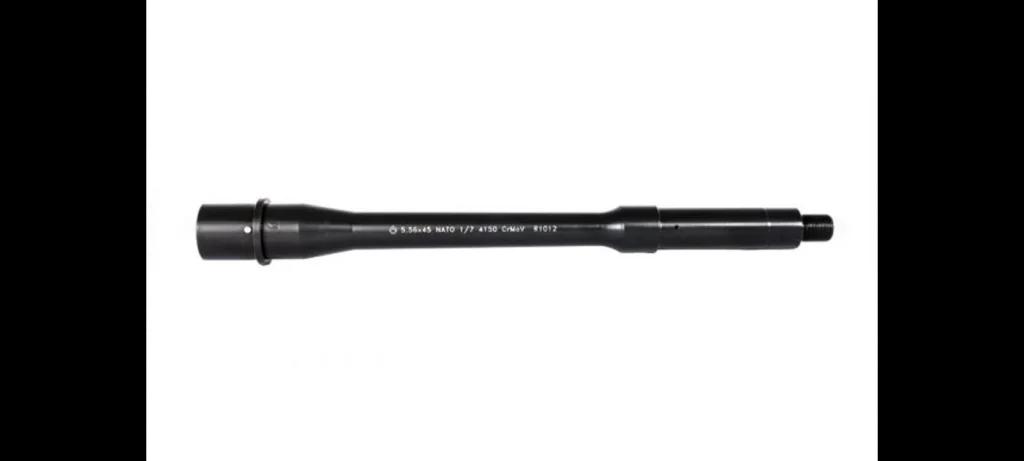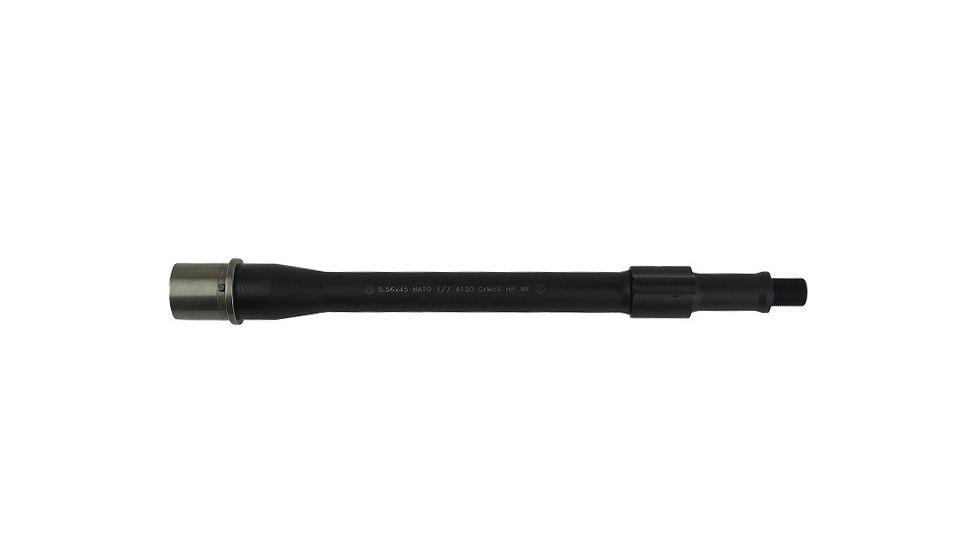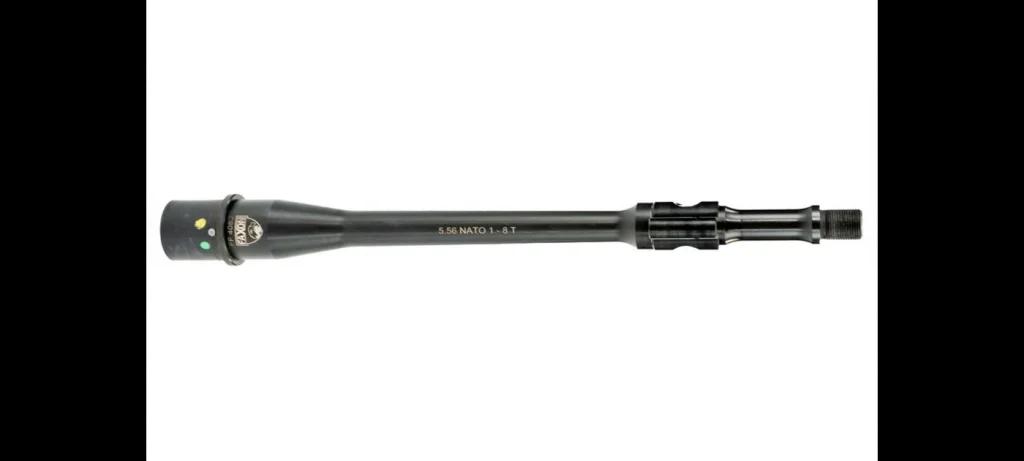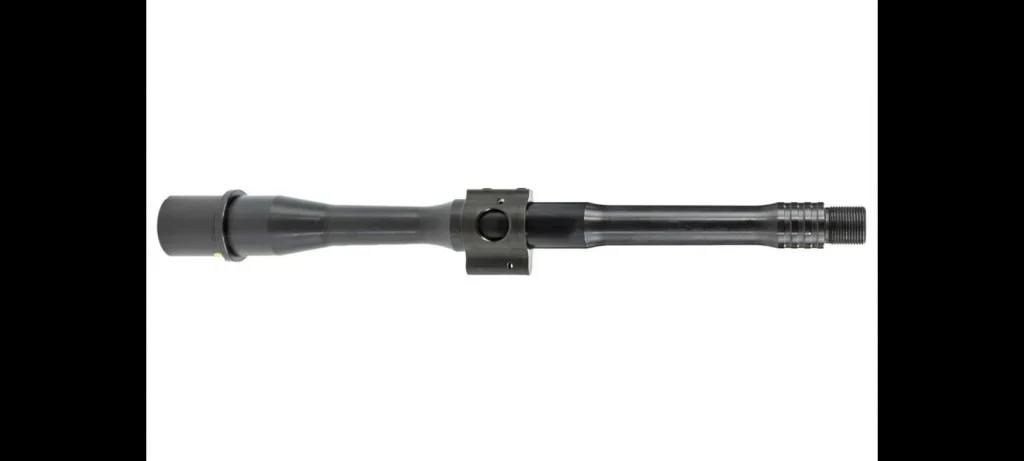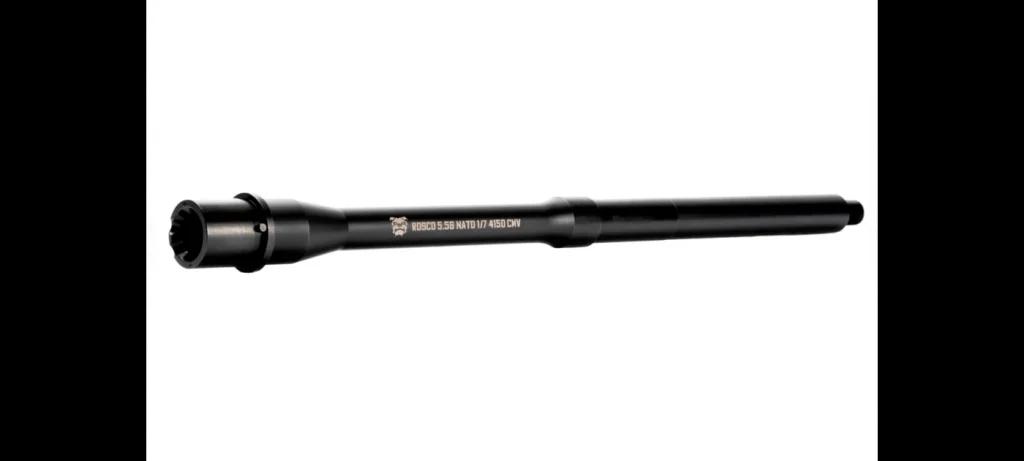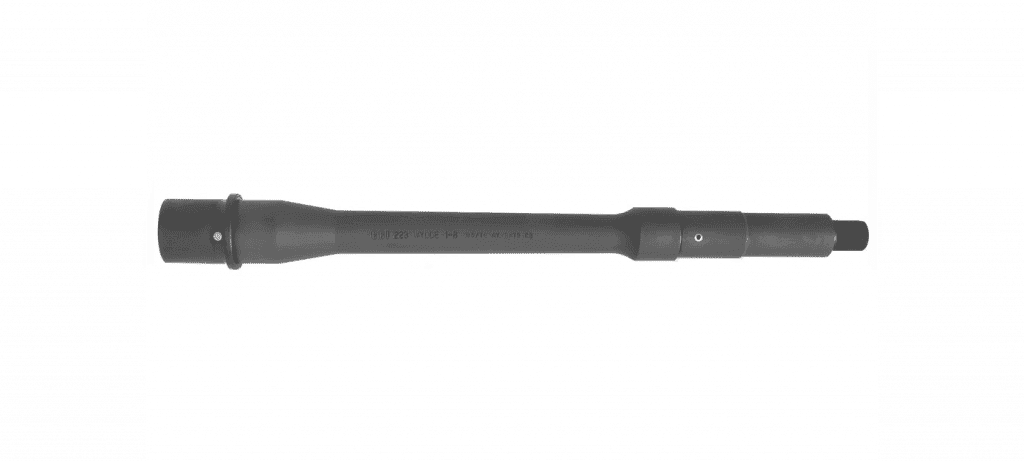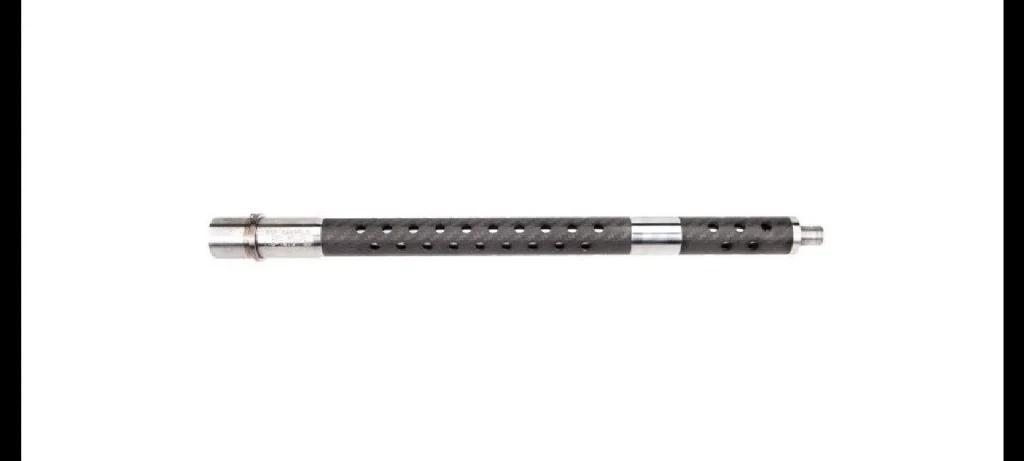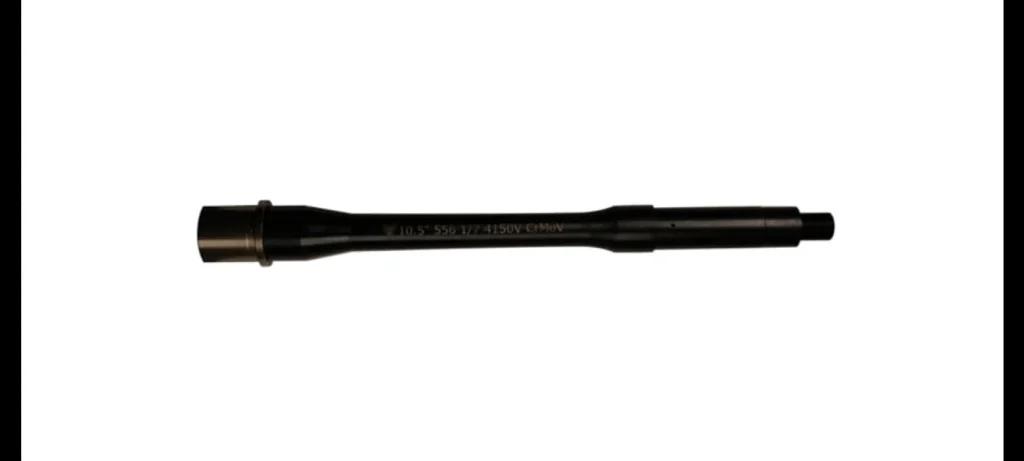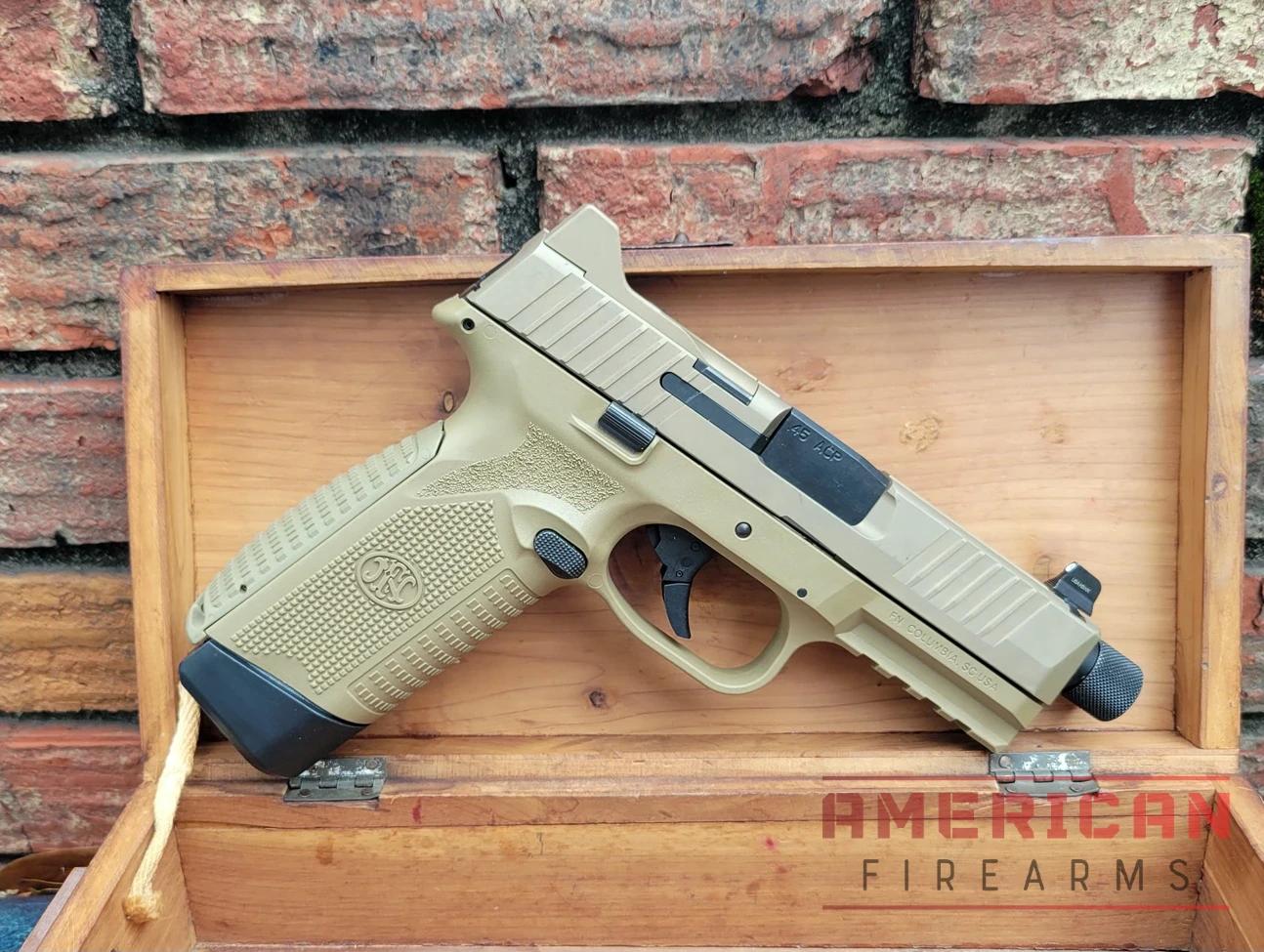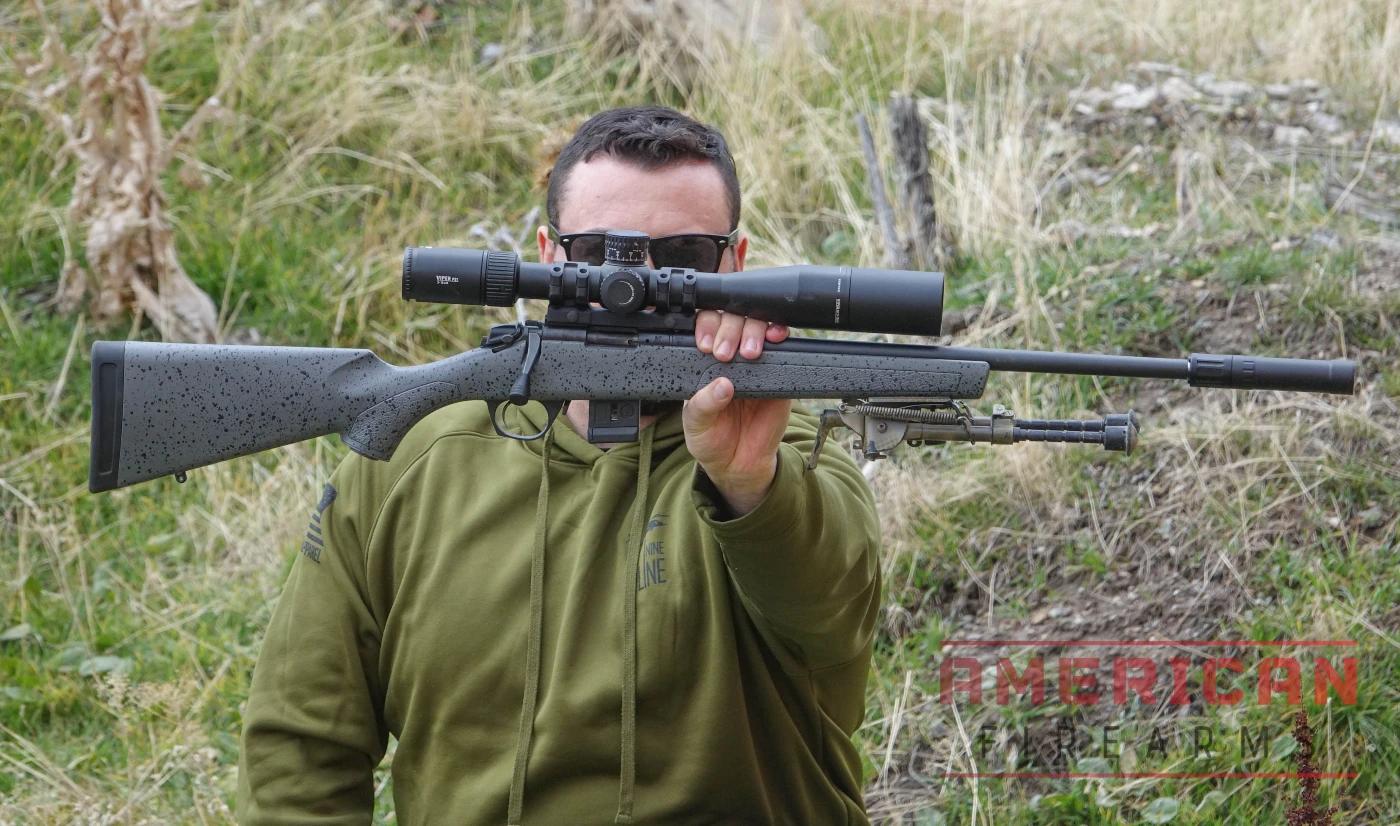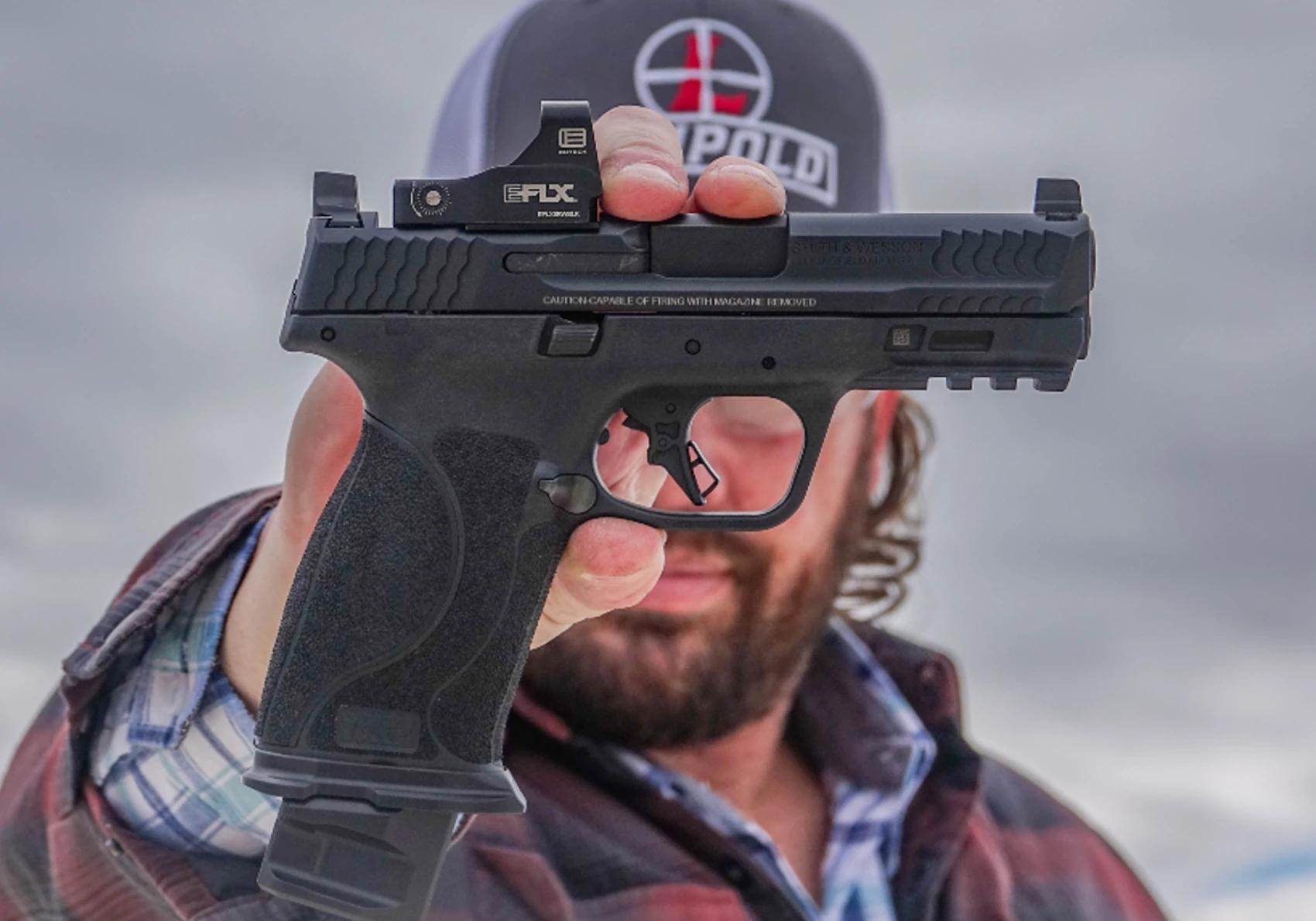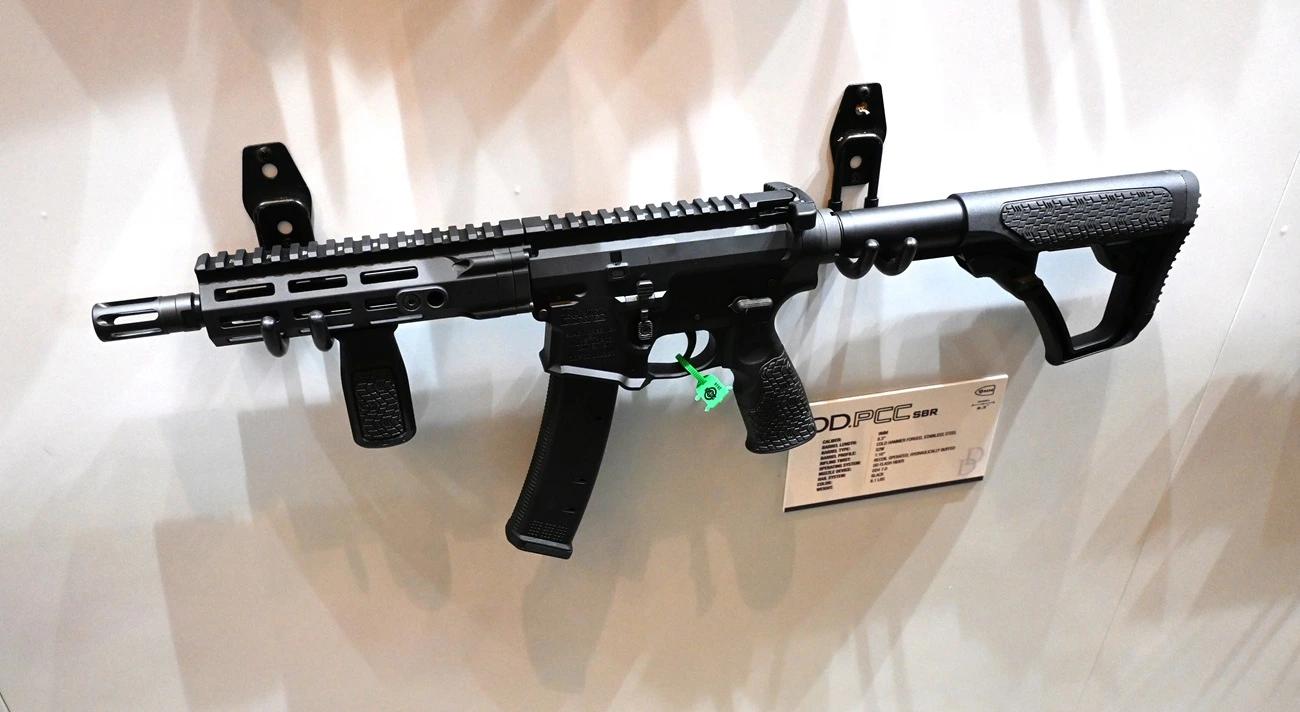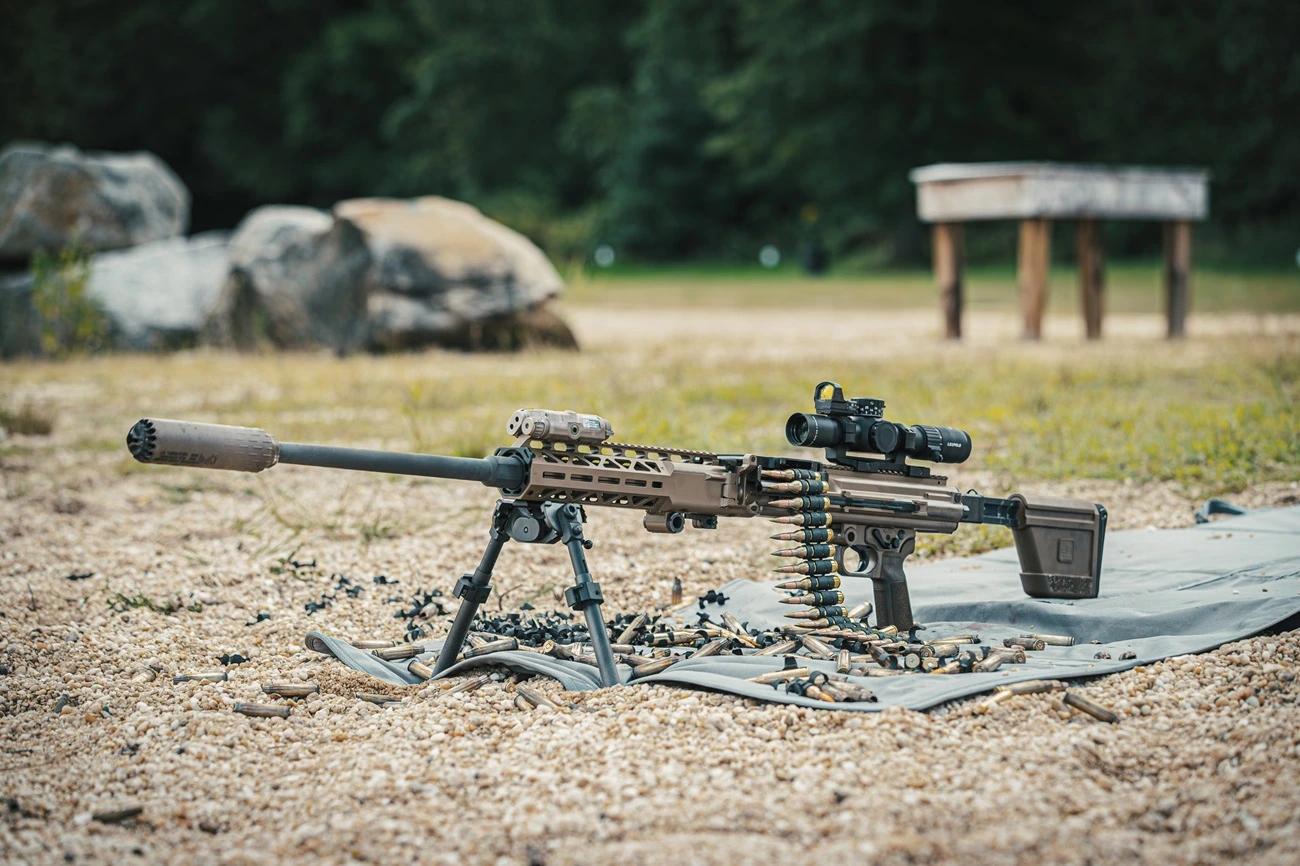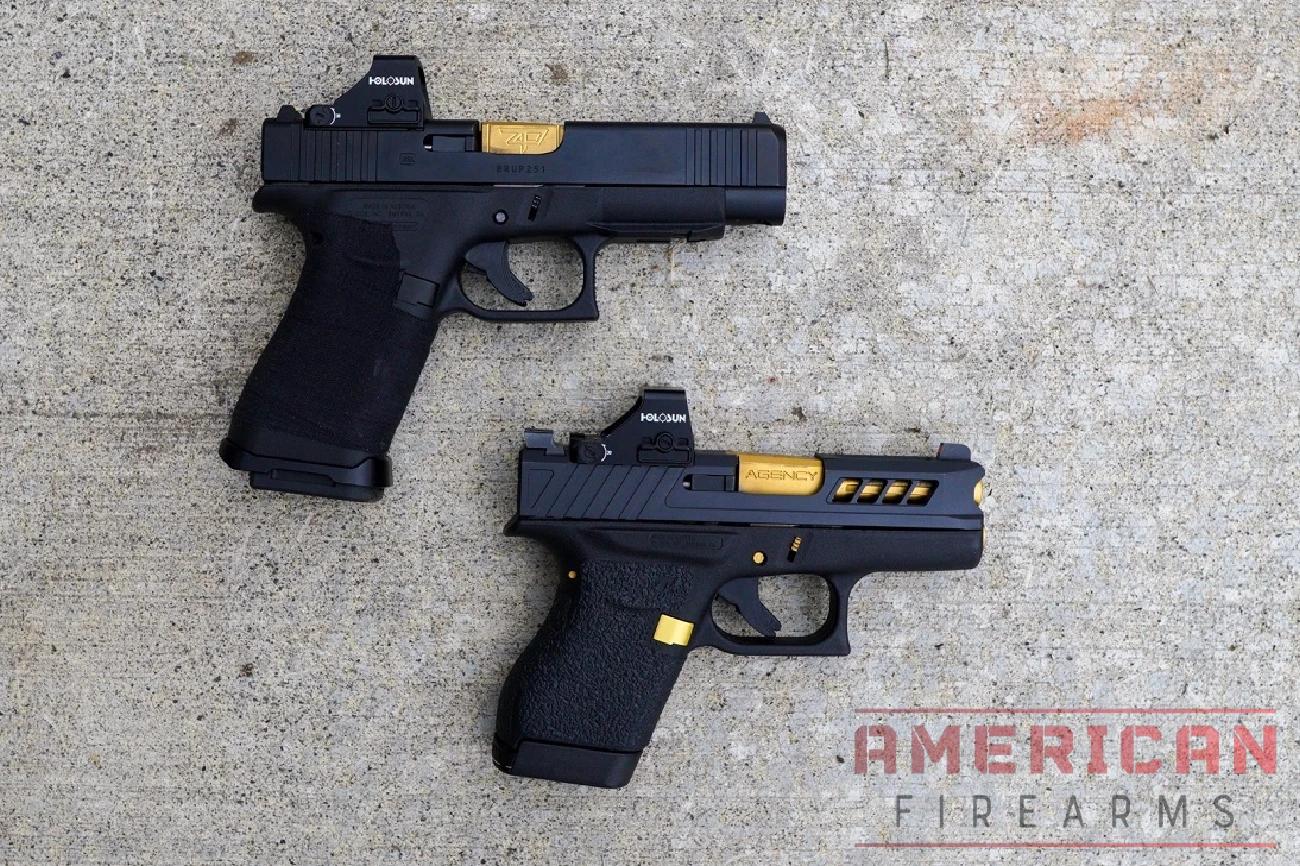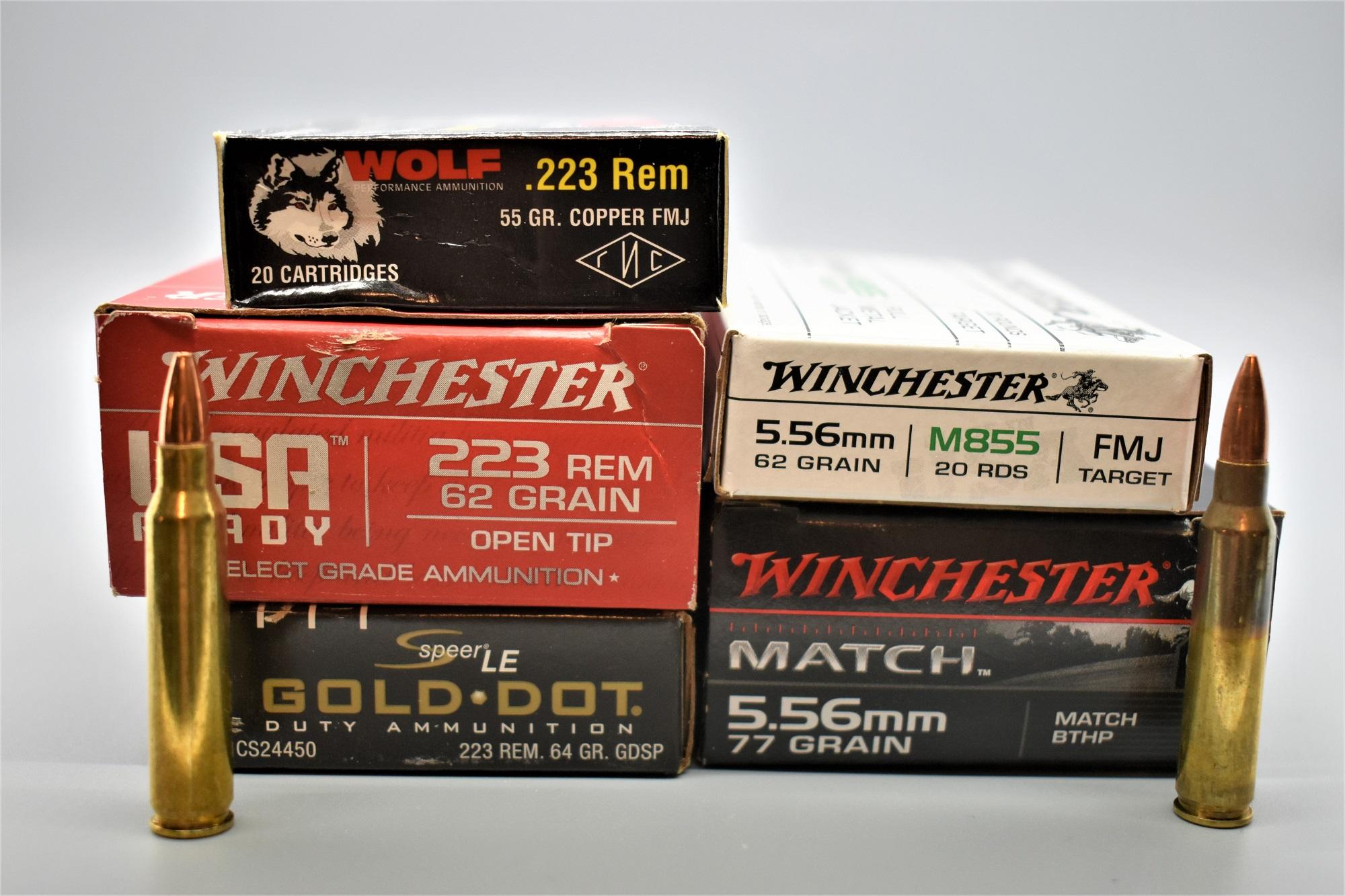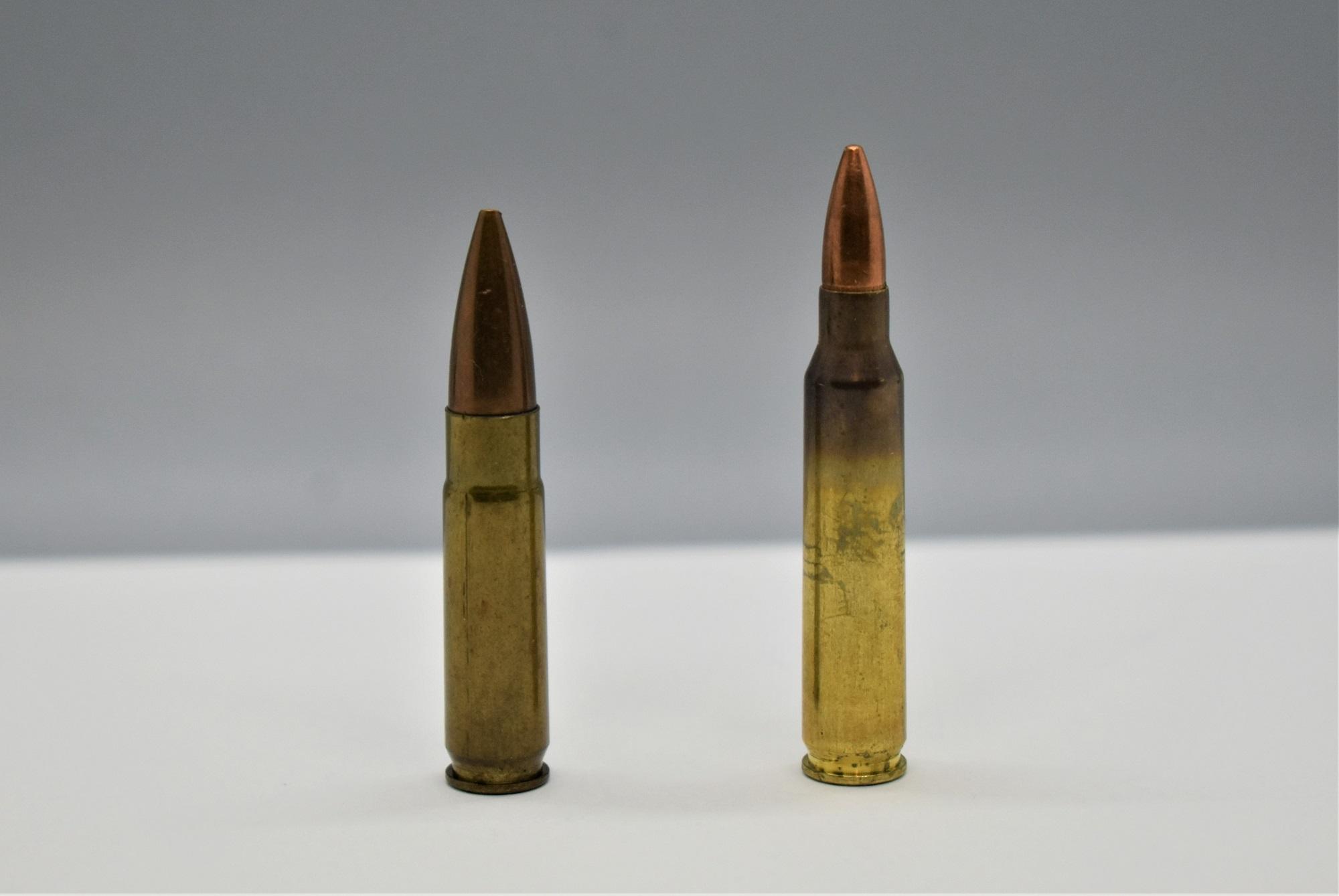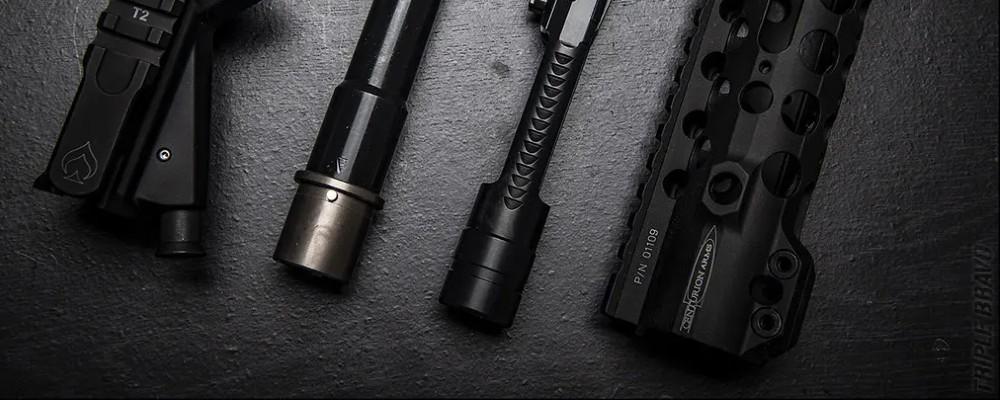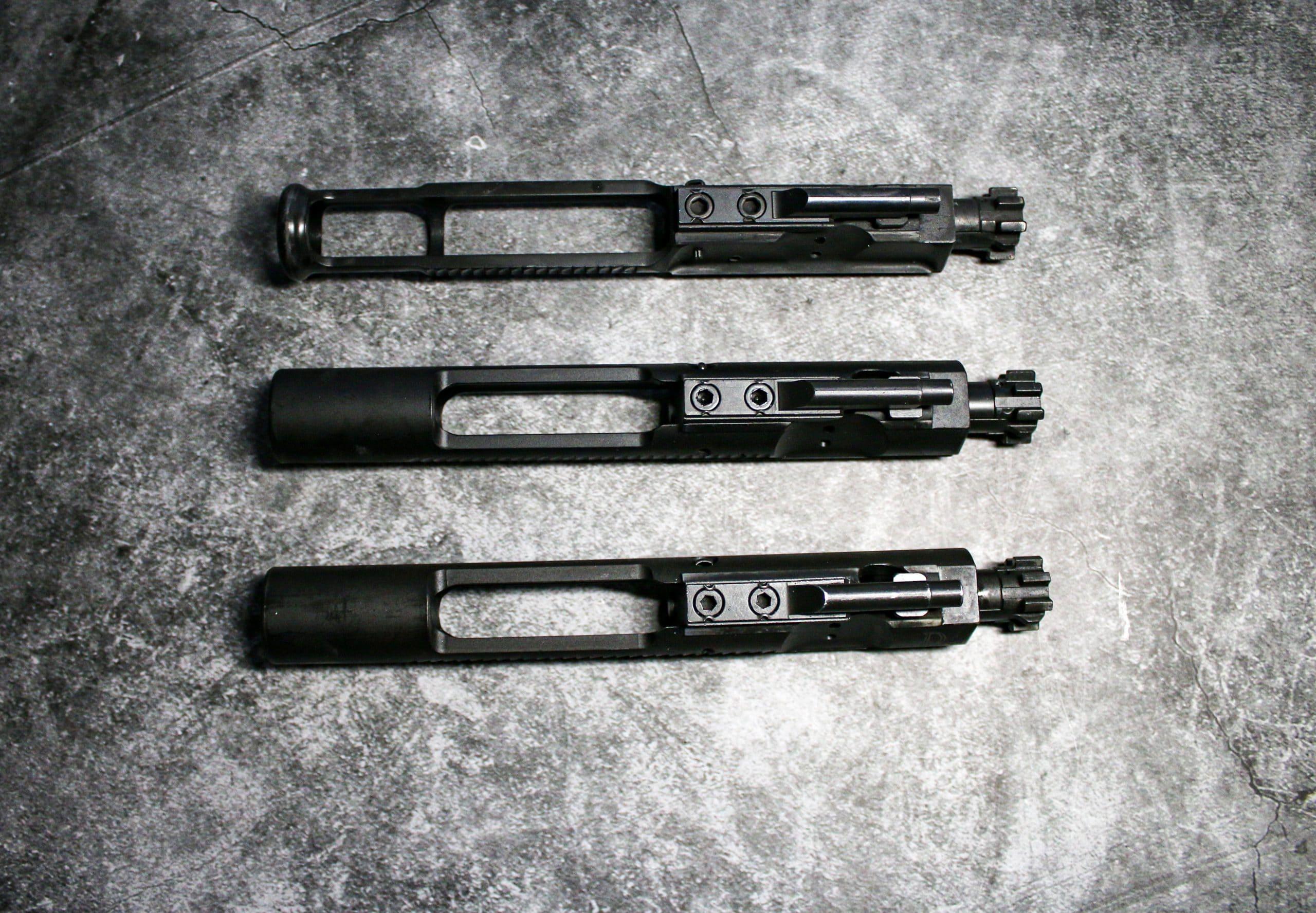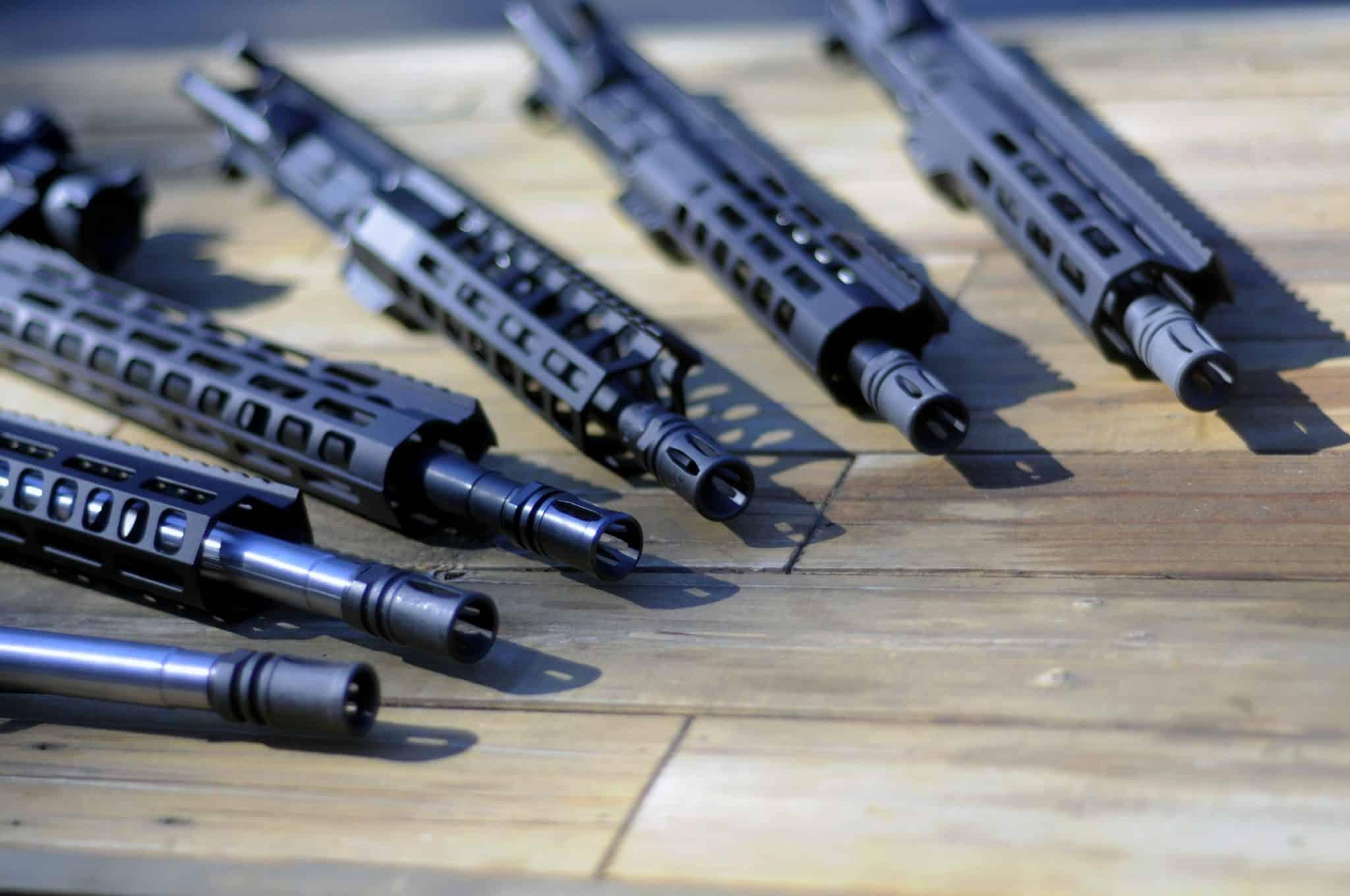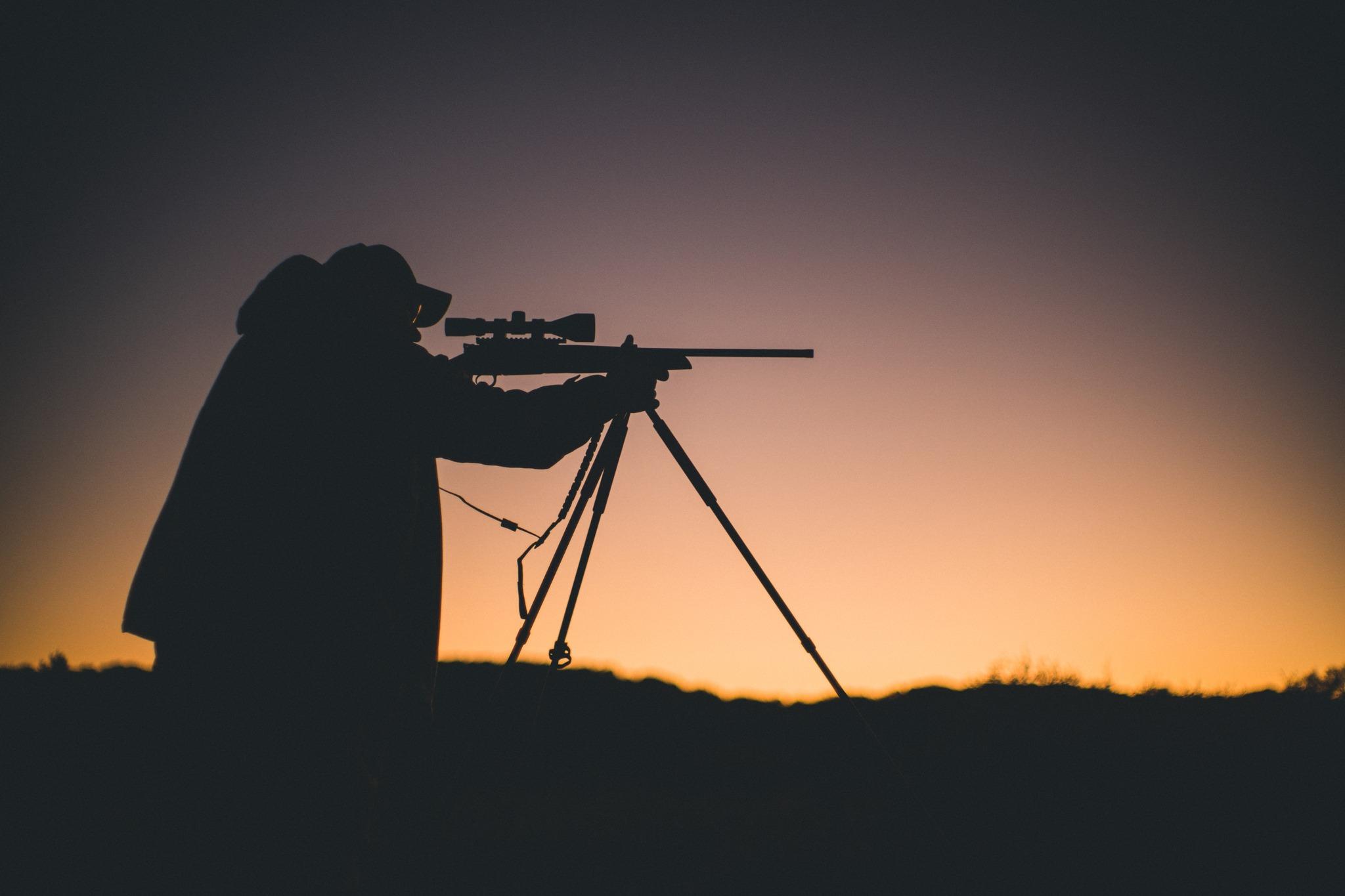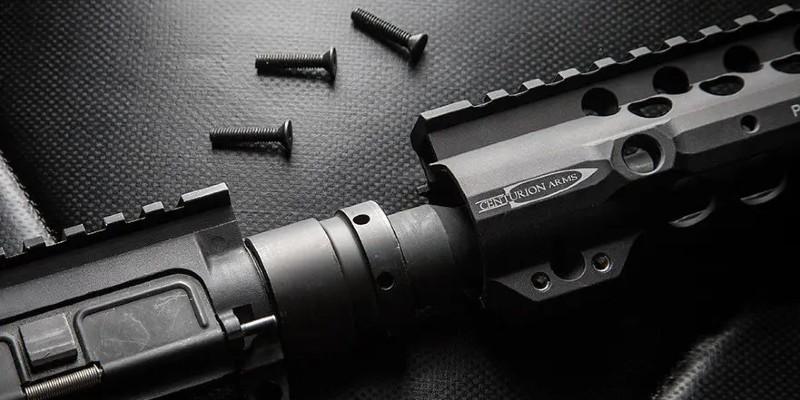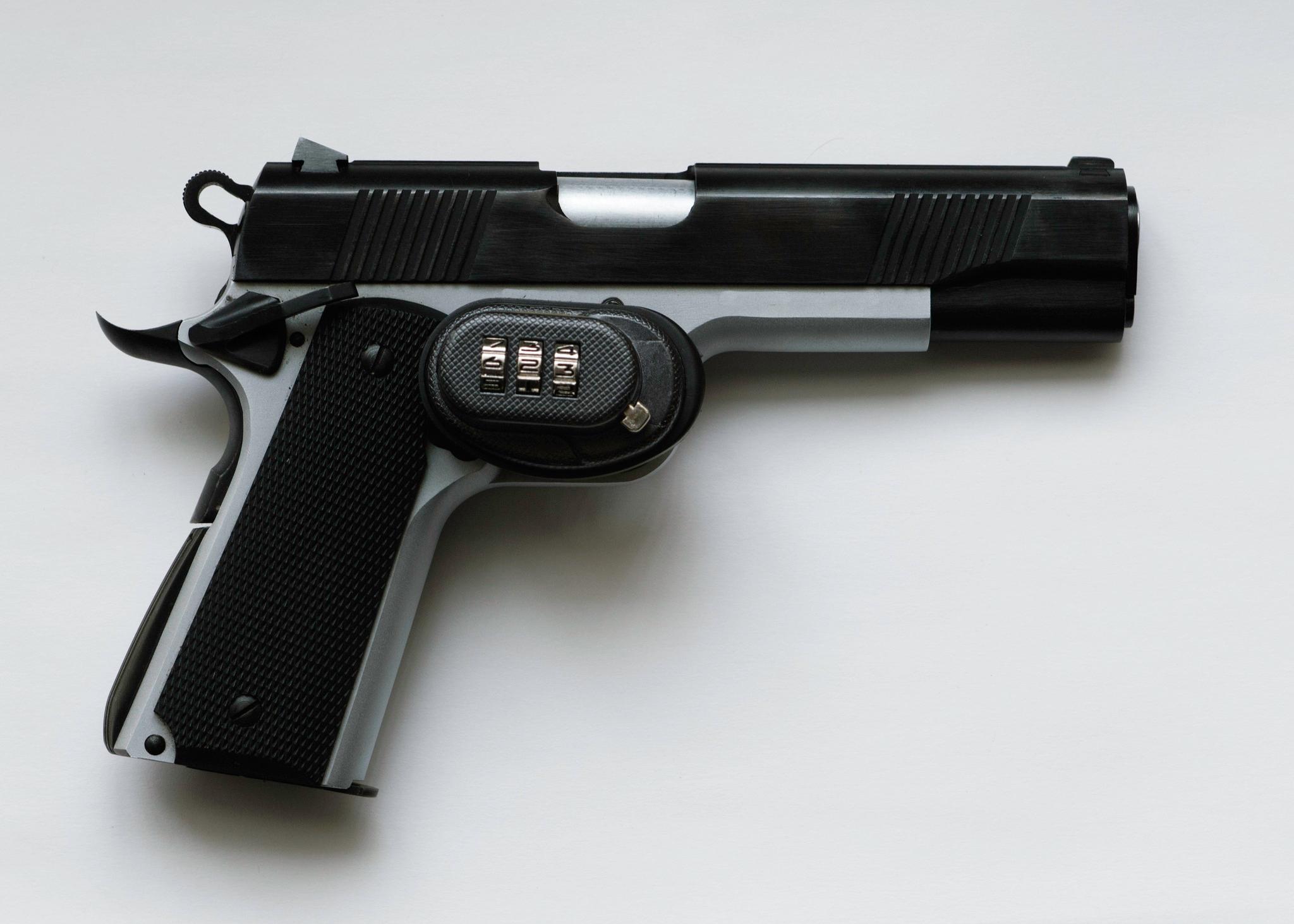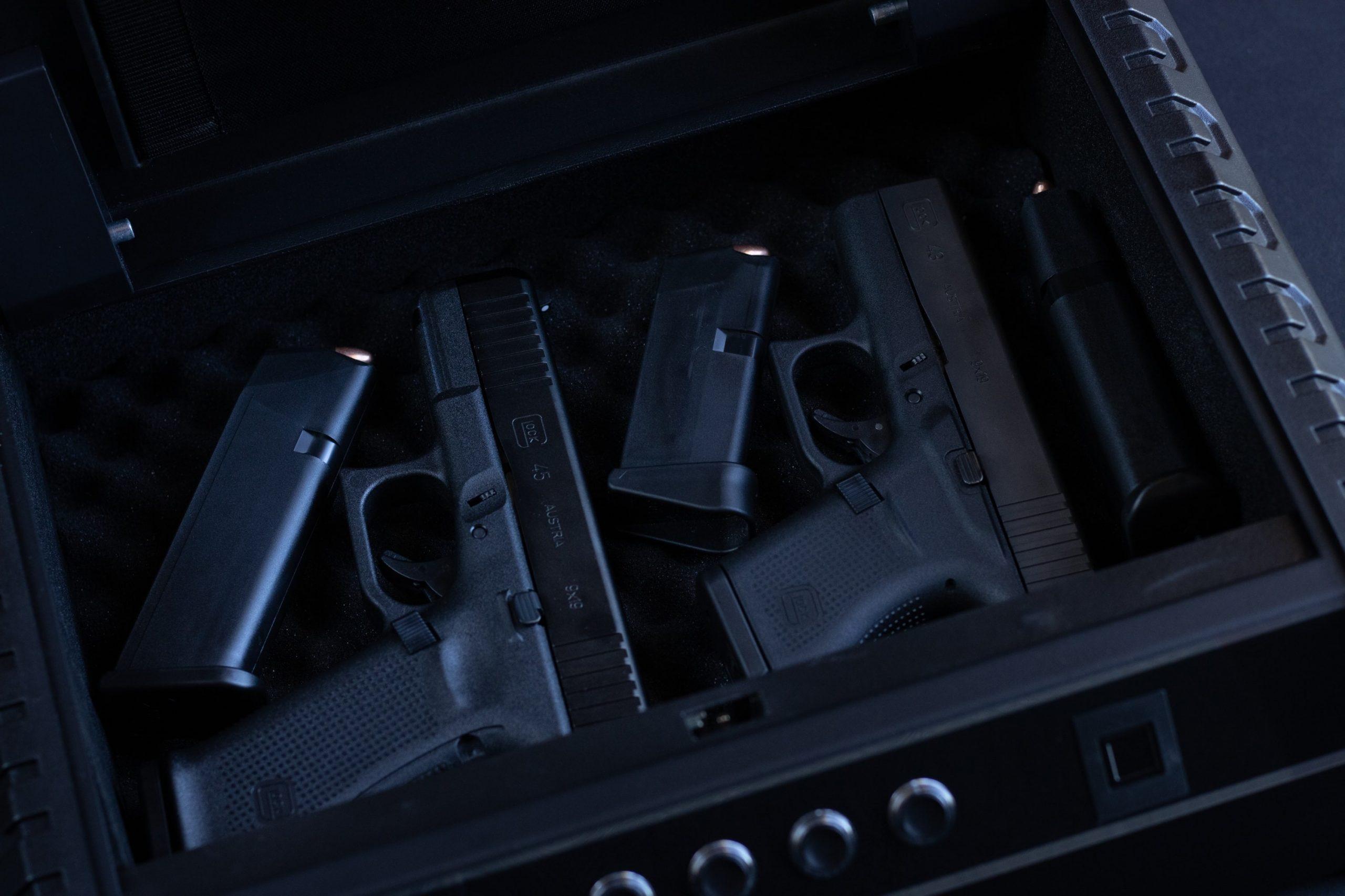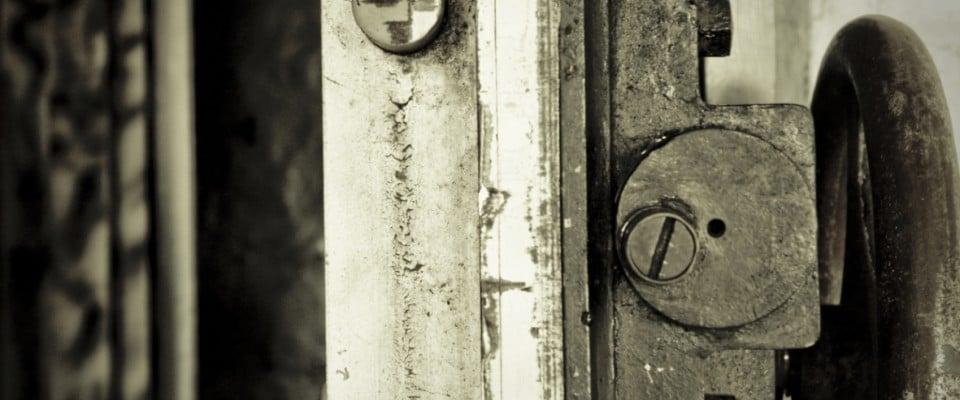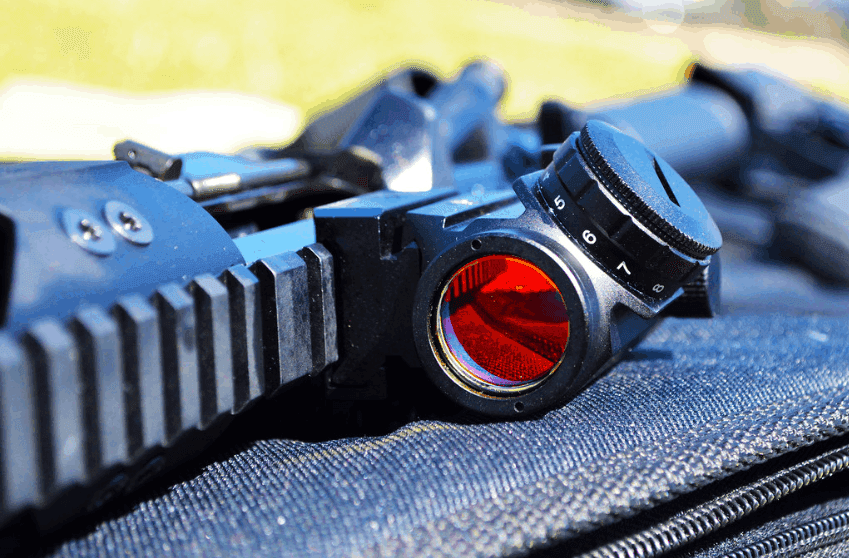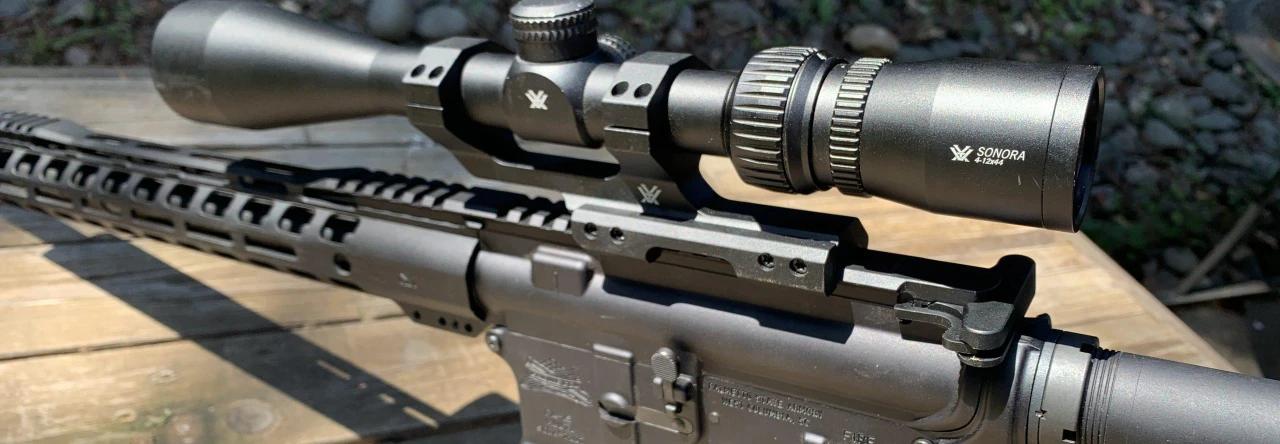The Best 10.5 AR Barrels
Written By
Michael Crites
Licensed Concealed Carry Holder
Reviewed by
Editorial Team
Learn About The Editorial Team
Share:
Products are selected by our editors. We may earn a commission on purchases from a link. How we select gear.
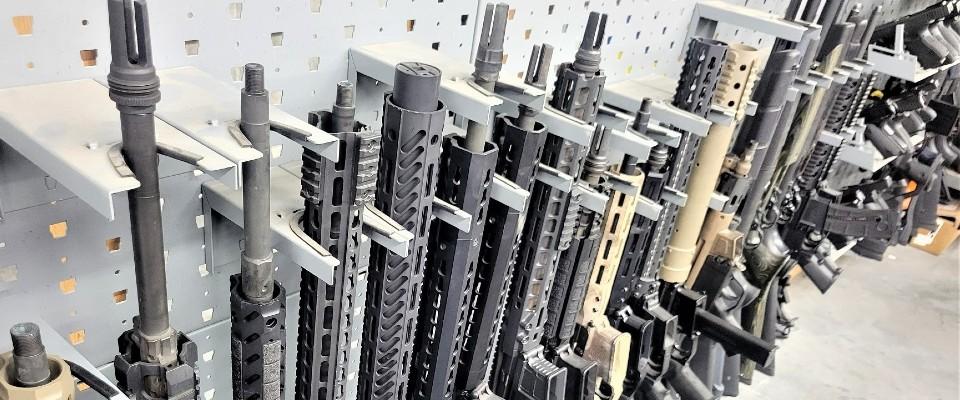
Updated
Mar 2023
One of the things that helped secure the enduring legacy of the AR-15 platform is how incredibly customizable it is — and nowhere is that customization more on display than with AR-15 pistols.
Initially laughed off as a bit silly, as the years have gone on more and more shooters have realized just how practical these things can be, helping them become quite popular. So popular, in fact, that you can now get 10.5 in. AR pistol barrels from most barrel-makers.
This is great news for use AR pistol shooters in that we have a ton of excellent choices that can improve the accuracy and performance of our guns. But of course, that means we have to sort through the several dozen 10.5” AR barrels out there.
To help with that, and to keep you from undercutting your rifle’s performance with the wrong barrel selection, we decided to review all of the most popular options out there so that we would A) know which ones were best to put in our pistol builds and B) be able to share that info with you lovely folks.
Let’s take a look at the best of the AR pistol barrels, as well as some general info that will help you choose the best ones for your specific needs so that you get the best option for your particular AR pistol build.
In This Article
10.5 AR Barrel Comparison
Below is my list of the best 10.5-inch AR barrels. I list the best choices in terms of value, performance, design, and cost.
Click on the name to head to the product page, read reviews and check prices or skip ahead to the list of barrels.
| Name | Selection | Price |
|---|---|---|
Best Overall | $149 | |
Also Great | $140 | |
Upgrade Pick | $205 | |
Best Pencil Barrel | $151 | |
Best Combo Profile | $179 | |
Budget Pick | $139 | |
Premium Pick | $269 | |
Carbon-Wrapped Option | $692 | |
Also Great | $255 | |
Best Match Barrel | $239 | |
Budget Runner-Up | $124 |
Why You Should Listen To Us
I’m not embarrassed to say that I have spent…quite a lot of time researching and testing AR-15 barrels. AR parts in general are something I’ve dug deep into on over the years, and barrels are a particular point of interest because they have such a huge impact on a gun’s performance.
If you’re ever looking to upgrade an AR-15, the trigger and barrel are almost always the places you want to start. These parts — pound for pound — simply have the biggest effect, so most rifle builders (myself included) either start with a really good one, or upgrade them at the first opportunity.
Needless to say, over the years I’ve replaced a lot of barrels, and I’ve spent even more time researching the best ones out there and testing them in builds of my own.
Let’s take a look at the best 10.5 in. AR barrels you can get right now, and then we’ll have a talk about how to choose the best one for your specific needs.
10.5 AR Pistol Barrel Reviews
1. Best Overall: Aero Precision 10.5″ 5.56 AR Barrel
Aero Precision’s 10.5” 5.56 CMV barrel is another phenomenal option for anyone looking to spend a little extra to get something really nice.
Aero is known across the industry for some of the best machining and finishing around, and their barrels do nothing to harm that reputation. Each one is made of 4150 CMV, which is as good as it gets for barrel material, then finished with an awesome QPQ anti-corrosion finish.
If I’m being honest, I’m rough on my ARs, and even I have struggled to scratch and scrape the finish on this barrel, despite my best efforts.
The finish uses a specialized nitrocarburizing case hardening that is similar to Tenifer or Melonite, but stronger (in my anecdotal experience) than either of those two name brands. This really helps with wear resistance and corrosion protection.
And of course, Aero knows their stuff so it comes threaded and with a 1:7 twist rate that combines to make it just perfect for throwing into a pistol or SBR build.
2. Also Great: Ballistic Advantage Modern Series
The Ballistic Advantage Modern Series is a great option for anyone working in wet environments, particularly around saltwater. If you’re looking for an emergency boat gun build to help you fend of gators and/or the occasional pirate, this is a great barrel choice.
The barrel itself is 416R stainless with a QPQ finish on top for extra wear and corrosion resistance, making this one of the most rust-resistant barrels on this list.
I’ve included the 5.56×45 version here, but you can also get .300 BLK version if you’re looking to go that route. All of the Modern Series line is threaded, and the short barrels incude an optimal 1:7 twist rate — perfect for a pistol or SBR.
Finally, Ballistic Advantage hand-checks these barrels for accuracy and guarantees them as sub-MOA, so if you find yourself missing the bullseye, you at least won’t be able to blame it on the barrel.
3. Upgrade Pick: Ballistic Advantage Performance Series
Stepping things up a notch, we have the Ballistic Advantage Performance series, which is just an upgraded version of the Modern Series up above.
The Performance line features 4150 CMV steel with QPQ finish, and nickel boron coated feed ramp extension to help eliminate the more common wear points, or at least to beef it up so you won’t have to worry about it.
These barrels are MPI (magnetic particle inspection) tested to ensure they meet the exact tolerances and specifications Ballistic Advantage wants and that you need.
Overall, this is a premium barrel, and even though it costs a bit more than some of the others on this list, it’s worth every penny.
4. Best Pencil Barrel: Faxon Firearms Pencil Profile Barrel
Our next pick, the Faxon Firearms AR-15 Pencil Profile Threaded Barrel, is a mid-range offering from Faxon, one of our favorite AR barrel makers. I have owned several Faxon barrels, and I’ve yet to wear one out, though Lord knows I’ve tried (and will continue to do so).
This is a lightweight/pencil profile barrel, making it an excellent choice for just about any build, as long as you’re not going to be ripping hundreds of rounds at a time on full-auto.
It’s made of 4150 mil-spec steel that’s been fully stress-relieved and has an inside and out nitride finish to help prevent wear and tear on the barrel and corrosion.
While it’s Faxon’s entry-level option, it’s a good choice for anyone looking to get started with something affordable but still high quality.
5. Best Combo Profile: Faxon Firearms Gunner Profile Barrel
Faxon’s Gunner Barrel is one of my all-time favorites and one of my go-to recommendations for people who aren’t quite sure what they want. The Gunner profile is a Faxon-specific design that combines the pencil and government profiles to get something a little bit in between the two.
This gives you a barrel with more of the mass at the back, which dramatically improves the balance and handling of an AR-15 pistol.
Materials-wise, you can choose from the same mil-spec 4150 steel as the above Faxon pencil barrel, or you can get a lovely 416-R stainless barrel for just a little bit more. The mil-spec option is covered in a salt bath nitride black finish, and the stainless is bare metal.
6. Budget Pick: Rosco Bloodline 5.56 NATO Barrel
Rosco Manufacturing is not a name I was familiar with until just a few years ago, but I’ve since had the opportunity to test a rifle fitted with one of their barrels, and I was nothing but impressed. Their Bloodline 5.56 NATO barrel is one of the better values available right now.
It features a 4150 CMV steel and a black nitride finish, with an ideal 1:7 twist rate that is perfect for any short-barreled AR.
The barrel profile is a standard Government profile, so it’s a good middle-ground option that saves on weight but still has enough mass to offer good heat resistance and dissipation for those longer strings of fire. Otherwise, the barrel might get a little toasty.
These barrels are also very affordable, and Rosco has them available in a few different calibers, so you can get a great .300 BLK option if you’re looking to go that route (which is an excellent choice for an AR-15 pistol given its ballistics and can-friendly nature).
7. Premium Pick: Criterion Barrels AR15 Barrels
Criterion is one of the foremost names in rifle barrels, and their AR-15 barrels are truly something to behold, pistol barrels included.
They are made from 4150 CMV steel, and feature a chrome-lined interior and chamber, as well as a cool hybrid profile that helps to keep the weight distributed optimally so your pistol will handle perfectly.
You have options for 5.56, .223 Rem, or my personal choice .223 Wylde chamberings. The barrel comes threaded from the factory so you can easily throw on whatever muzzle brake, compensator, suppressor, or device you think will work the best for your setup.
The barrels are honed and lapped by hand, and are some of the most internally-precise barrels we’ve ever tested. The hand finishing gives the inside a much smoother finish, which makes cleaning easier, and theoretically ups the accuracy as well.
All in all, this is a premium barrel and one we’re happy to put in any build.
8. Carbon-Wrapped Option: BSF Barrels AR-15 .223 Wylde Barrel
BSF Barrels does one thing, and they do it very well: make barrels. This particular barrel is a .223 Wylde barrel with a carbon-fiber roll wrap that adds an immense amount of stiffness and heat dispersion capability, while also cutting about 30% of the weight.
The base barrel is 416-R Stainless, and you can get gray or silver carbon fiber for the strengthening wrap.
The wrapping method is specifically engineered to avoid delamination issues, which is really the only problem you could run into with a CF-wrapped barrel, other than the extra up-front cost when you purchase it to begin with.
The carbon fiber wrap allows the barrel to shed heat much faster and more efficiently than steel alone, drastically reducing wear and the potential for rust as well. These barrels may cost more, but they’ll last more than twice as long.
If you’re looking for a truly top-of-the-line barrel and don’t mind spending more to get it, this is the one to go with in my opinion.
9. Also Great: Shooting Innovations 5.56 Standard
Next, we have another relative newcomer, the Shooting Innovations 5.56 Standard. This little guy is available in several sizes from 7” to 16”, so you have some other options if the 10.5” doesn’t wind up being exactly what you want.
It features a Government profile, black nitride finish, and is threaded with standard 1/2×28 threads so you can slap whatever muzzle device you want on the end of it right out of the box — making this a great choice for anyone looking to shoot with a suppressor.
10. Best Match Barrel: Veritas Tactical Pro Match AR Barrel
This is another brand that I wasn’t familiar with until a few years ago when I got the chance to test some new rifles, including an SBR fitted with this exact Veritas barrel.
Since that testing, and after trying out a few other barrels, I’ve found that these barrels are real workers and some of the most accurate I’ve ever had in my safe.
The Pro Match Barrel series features a specialized single-edge polygonal rifling that combines the benefits of both standard and polygonal rifling to give you the best of both worlds while simultaneously mitigating some of the problems with each.
The rifling contacts the bullet more tightly, which leads to higher gas pressures and thus more velocity. Plus, it creates a more consistent and symmetrical bullet movement down the barrel.
All in all, this is an absolute beast of a barrel and the most accurate AR barrel I’ve tested in the price range. It is also made of 4150 CMV and has the standard 1:7 twist rate we want for an AR pistol barrel.
11. Budget Runner-Up: TRYBE Defense Government Profile Barrel
Lastly, our budget-minded pick is the TRYBE Defense 10.5in Government Profile barrel. This is…as standard-issue as you’re gonna get for a pistol barrel.
It’s available in a couple of different calibers, but I recommend the 9mm and the 5.56 ones personally as they’re the ones I’ve used. This is actually what’s in my 9mm AR pistol right now.
The barrel is made of 4150 CMV, which is its only real high-end feature, and has a standard mil-spec nitride finish.
I still love this barrel, even compared to some of the options on this list that cost 2x, 3x, or even 6x what this one does, just because you get so much value for your money and TRYBE still has excellent machining standards and craft.
Why Use an AR Pistol?
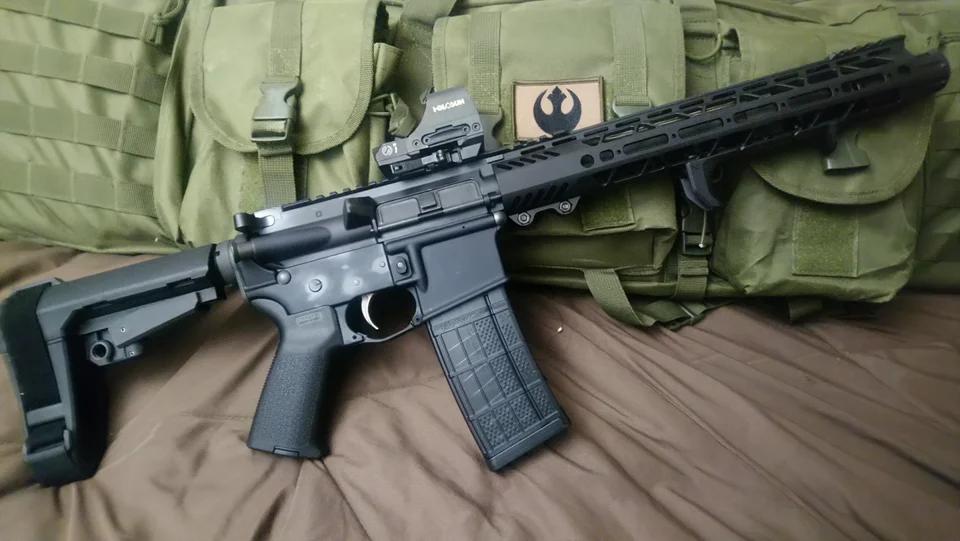
AR pistols came about as a result of some ingenuity on behalf of a few companies — along with some creative interpretation regarding the definitions of what constitutes a pistol vs. a rifle as far as the ATF is concerned.
Notably, the numerous rulings around pistol braces, such as the SIGTac SB-series of stabilizing braces, which make firing these pistols much easier, especially if you were to fire them from a “certain position” which would perhaps put said brace in contact with your shoulder parts.
While the legality of these braces occasionally gets thrown up into the air, as well as our ability to use them in ways other than as — strictly speaking — a “stabilizer brace”, they are indeed different from a traditional stock, and allow for much more control over an AR pistol.
Thanks to their revolutionary design (and careful negotiations with the ATF that have made these braces legal) AR-15 pistols have exploded in popularity, particularly among shooters who are either waiting on SBR paperwork or don’t want to pay the $200 and wait 8 months for the SBR stamp.
A pistol brace on an AR-15 is a great way to get 90% of the SBR performance without that tax stamp and lengthy waiting period.
AR-15 Pistol Performance
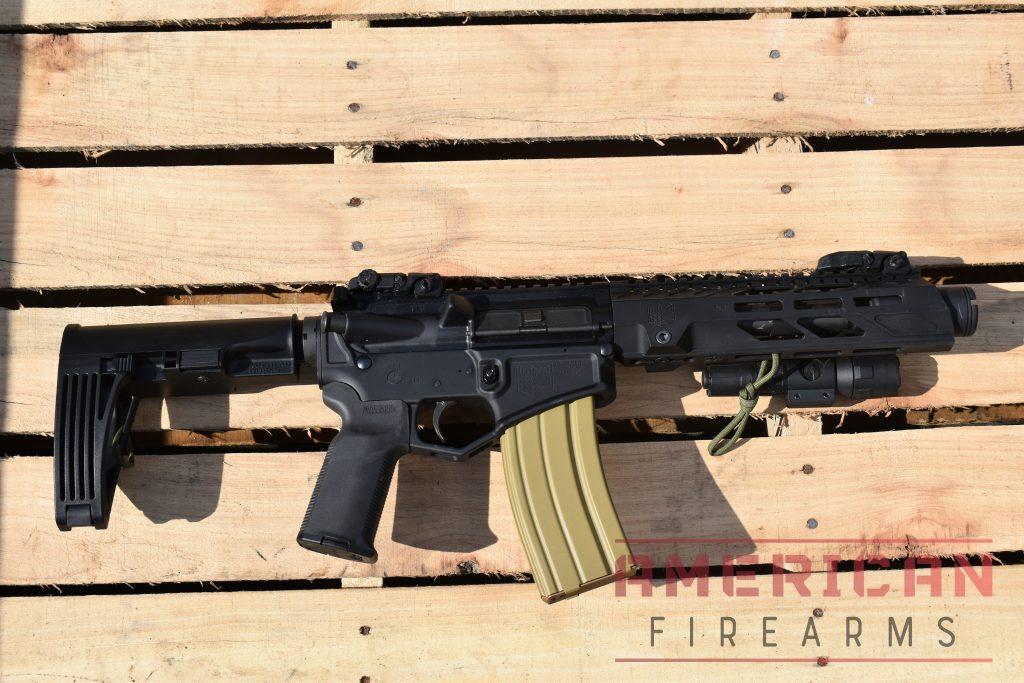
When I say 90% of the performance, I really do mean that. In terms of accuracy, velocity, penetration, and things like that, you simply don’t lose that much when you chop 6in off of your AR-15 (if you’re a civilian shooter anyway, results may vary if you have to shoot through body armor).
You still have basically the same platform — and it’s just as reliable, easy to find parts and ammo for, and as customizable with lights, laser, optics, pencil sharpeners, laser designators, and whatever else you’d like on your rifle.
It’s just, you know, shorter.
It also has a different designation as far as the ATF is concerned, which comes with all of its own hangups and is beyond the scope of this article. Still, the only thing you’ll lose is a (nearly imperceptible) bit of muzzle velocity.
I’ve seen people compete and win with these in competitions (where they’re legal). I’ve shot them extensively myself and other than having to choke up on the pistol more and having a skosh more recoil to deal with, you really don’t notice a difference — even when using them for competitive shooting.
I say “more recoil”, but you’d be hard-pressed to notice unless you’re shooting the pistol with your arms fully extended. Both the pistol and rifle variants of the AR-15 are very easy to control across all calibers, pinky promise.
Where the AR-15 really comes into it’s own as a pistol is with certain rounds like .300 Blackout which are specifically designed to burn all their powder in a shorter barrel (9 inches, in the case of the Blackout).
With these types of rounds, you will really find it hard to notice a difference in velocity, recoil, or terminal performance. The Blackout is engineered to perform at bad breath distances, so if you’re really worried about your pistol underperforming, go with .300 Blackout and rest easy.
Still, unless you just find the ergonomics of the pistol unpalatable — which would also be a problem with an SBR, carbine, SMG, or any other shorter, shoulderable firearm — there’s really no huge loss in performance from a rifle to a large-format pistol.
AR Pistol vs Rifle
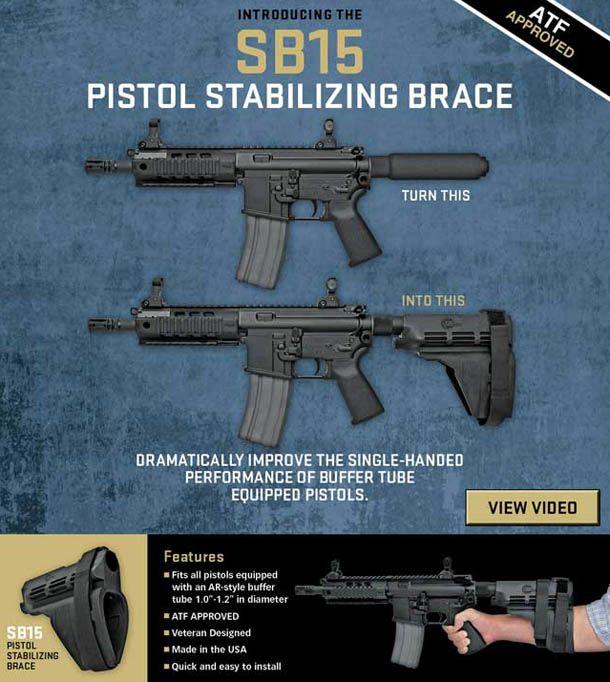
So is an AR-15 pistol worth it over a rifle? At the end of the day, only you can make that decision because what works better for one person or one style of shooting might be awful for someone or something else.
Now, with that said, there are definitely some areas where pistols will perform better than rifles and vice versa.
First of all, an AR-15 pistol is going to be much better for a truck gun or for home defense. The simple physics of having a smaller, more maneuverable gun in tight spaces is an absolute godsend, especially in a hectic situation where you need to move quickly.
Second, if you’re using a suppressor, an AR pistol is a massive improvement because you’ll still end up with a fairly standard-length rifle, even with the can. The suppressor will help boost your velocity a touch to get you closer to what you’d have with a full-length rifle barrel.
You’ll also eliminate most — if not all — of the fireball that you typically get with a short 5.56/.223 rifle if you’re running a suppressor.
This has obvious advantages indoors as you won’t blind and/or deafen yourself if the worst happens and end up firing in a hallway or other confined space.
Other muzzle devices will help capture that extra powder and avoid too much of the fireball effect though, so don’t worry if you aren’t going to be springing for an actual can.
In terms of handling and accuracy, it is definitely much easier to shoot a full-length rifle accurately, especially from a rested or prone position. Rifles are clearly the better choice for more precise long-distance shooting. Even inside 100 yards, you’ll notice the difference.
At longer ranges, you can encounter some velocity issues with the pistol. A 16” barrel will get your standard 55gr FMJ up to a velocity of around 3,064fps. Chop that down to a 10.5” barrel and you lose about 500fps, or roughly 15% of your velocity.
As ranges start to stretch, this leads to faster drop, more drift, less penetration, and a lower likelihood of proper bullet expansion and fragmentation. None of which sounds like a benefit.
If you’re trying to snipe coyotes at 500 meters, the pistol may not be for you.
At the end of the day, keep an AR-15 pistol around for close-range work and you’ll be in a good place. Stretch beyond 100 yards and while it’ll get the job done, there might be better options out there.
As far as parts go, you’ll obviously need a shorter barrel (which we’re covering here) as well as a shorter gas tube and handguard. Other than that, I’d recommend throwing a handstop on the front to keep your hand from sliding too far forward by accident and you’re essentially good to go.
The only other real difference between the AR-15 rifle and the pistol version is that the rifle has the full 16” barrel (or longer) and a “stock” on the back end per the ATF, whereas the pistol has a short barrel and a “brace” per ATF rules. Just make sure you’re not swapping barrels and uppers between rifles and pistols or tacking a vertical grip on your pistol to stay in the ATF’s good graces.
Choosing the Right 10.5 in. AR-15 Barrel
When it comes to choosing the right barrel for your AR build, there are a few things to keep in mind.
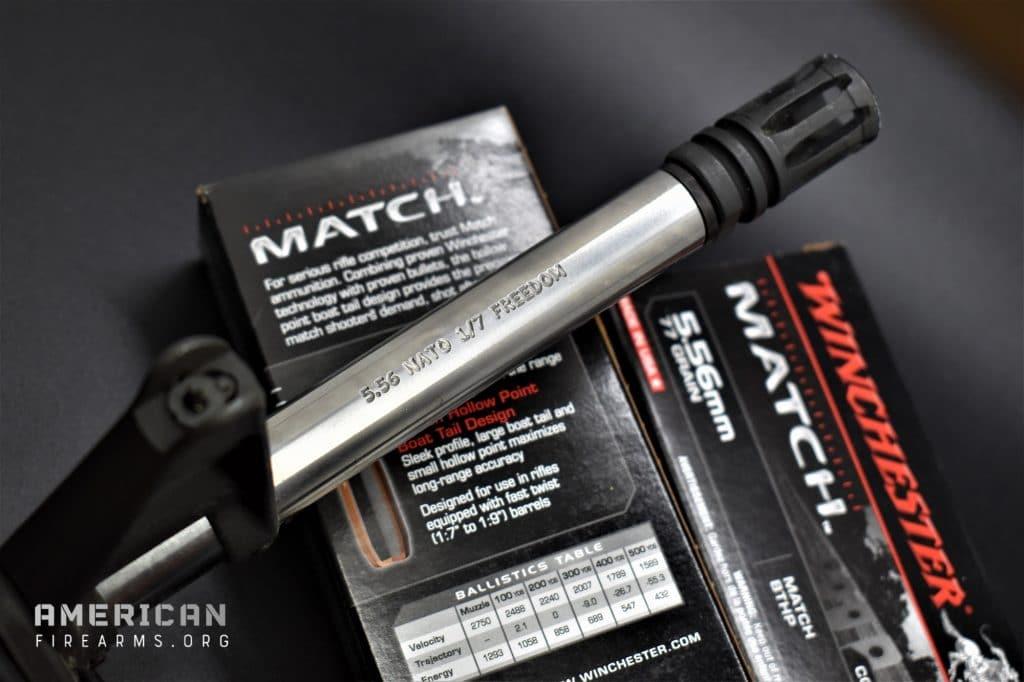
Types of Barrel Materials
First up, there’s the actual material of the barrel itself. AR-15 barrels are made of steel, generally speaking, though some do also add a carbon fiber wrap for extra stiffness and rigidity.
Not a lot of carbon fiber-wrapped AR pistol barrels out there though, so we’ll stick with covering steel options.
Basically all you need to know is that carbon fiber-wrapped barrels are better in basically every way except for physical resistance to scratches, and the fact that your credit card is going to try to run away from home if you buy one. They are Capital E “Expensive”. Still, they rock, and they’re worth it.
As far as steel then, we have a few different types available. There are various types of carbon steels, carbon steels with added vanadium, and stainless steels.
Your standard carbon steels are 4140 and 4150, which are steel alloys with added chromium and molybdenum, or Chromoly (which is much easier to say and really makes you sound like you know what your talking about). These added alloying elements strengthen the steel.
These two steels are perfectly fine for most shooters, though there are more premium options out there that will last longer before they start to wear out.
Next we have the carbon steels with added vanadium, which further strengthens the barrel. These barrels are typically labeled “Chrome-Moly Vanadium, or “CMV” barrels. These barrels will last about 20% longer than a standard carbon steel.
The most common one you’ll see is 4150 CMV, which, as you’ve probably already figured out, is 4150 carbon steel with added CMV.
Finally we have the stainless steel or SS barrels. These are typically 416 Stainless or 416R Stainless, both of which are more resistant to corrosion than carbon steel barrels on their own.
Of course, carbon and CMV steels are parkerized, or covered in some other type of coating.
Still, scratch off that coating, and your barrel could potentially rust. Scratch a stainless steel barrel and you’ve just exposed more of the same rust-resistant surface that you had before.
Stainless steel does still rust if not properly cared for, so it’s not a free-pass to let your rifle hang out in mud puddles — it’ll just keep the barrel safer if you can’t get to it immediately.
Choosing a Barrel Material
As far as which one to go with, I’d say the stainless options are a tad redundant unless you’re looking for that specific shiny barrel look, which is totally fine.
The standard carbon steels are also fine if you’re on a budget, but the CMV offerings will give you the best blend of strength, durability, and corrosion resistance.
We recommend CMV barrels if you can drop the extra cash.
Finally, there’s the option of chrome-lined or plain steel linings. Basically all you need to know is that chrome-lined barrels have chromed rifling, and plain steel ones don’t. Chrome-lining makes the barrel more durable by a significant amount, but it also adds more expense.
For a pistol, get the chrome-lining if you can swing it, but don’t stress too much over it, especially if you aren’t going to be shooting thousands of rounds a year.
Twist Rate

Twist rate refers to how much length it takes the rifling in the barrel to complete one full spin.
AR-15 barrel twist rates are typically 1:7, 1:8, and 1:9. These numbers mean the bullet will complete one full revolution every 7, 8 or 9 inches.
Normally, we’d say there is a debate here about which twist rate, but since we’re dealing with a short barrel, there’s really only one choice. We have to go with a fast twist rate to get heavier projectiles stabilized properly, and that means the 1:7 twist rate.
Any slower and you risk rounds failing to stabilize properly, especially 62gr projectiles and up.
Cold Hammer Forged or Button-Rifled (Mil-Spec)

The method manufacturers use to get that sweet rifling in your barrel varies, but the two main methods for rifling AR-15 barrels are cold hammer forging (CHF) and button rifling (the latter being the mil-spec method, though that may be changing with the army’s new squad weapon.)
From a machining standpoint, cold hammer-forged barrels are basically just beaten into submission under immense pressure, while button-rifled barrels are sized appropriately and then bored out by a carbide “button”.
This means that cold hammer forged barrels are a bit more expensive (the “hammers” in cold hammer forging use around 50 tons of force and aren’t cheap to buy or maintain), but a bit more metallurgically sound and can take more wear and tear.
Practically speaking, CHF rifling adds 50% more cost up-front, but you’ll have yourself a barrel that will last 20,000 rounds. A button-rifled barrel will last about 10,000 rounds before losing some accuracy.
How much does that accuracy loss matter in a short-barreled rifle? How much does $60 matter when you’re talking about a difference of $4,000 in ammo (and probably closer to $7,000 in match-grade ammo) over the life of the barrel? We’ll leave that up to you.
If you’re worried about cost at all, just get the button-rifled version. It’s just as accurate, and if after shooting through 10,000 rounds you need to start thinking about a barrel replacement, you can always swap to a CHF barrel down the road.
If cost is no issue, get the CHF one to start with. Easy.
Barrel Profile
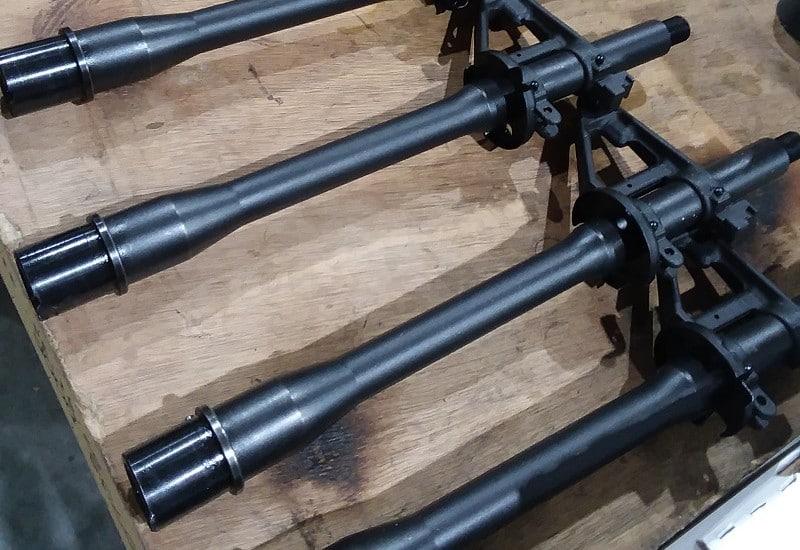
Barrel profile refers to the way the barrel tapers, and how thick the outter walls are. This influences hit dissipation, which impacts wear on the metal, as well as weight.
The three types you’ll see in general are lightweight (sometimes also called “pencil” barrels), government, and heavy.
You can think of these as light, medium, and heavyweight respectively, and the heavier the barrel is, the longer it will last as it will have more mass to absorb heat from firing. If you aren’t rapid-fire mag dumping hundreds of rounds without a break, you’re probably fine though.
You’ll sometimes also see fluted barrels, which have lightening cuts or flutes that wrap around the side. A fluted barrel is great for lightening up a rifle, but with a pistol length barrel it really offers little benefit
There’s a fourth “profile” which is the carbon fiber-wrapped barrels, which are, again, the best overall option but very expensive compared to other choices. They’re lighter than a lightweight barrel, and better at dispersing heat than a heavy barrel. The only downside is the price.
For a pistol, I’d recommend a pencil barrel or government profile barrel, but the CF-wrapped barrels sure are great. They also look awesome and have the longest barrel life. For a pistol AR build though, don’t stress too much about barrel profile.
When Should You Replace Your Barrel

There’s really no hard and fast rules here, but in general I have to say just replace it when you notice a problem. You’ll start to see rounds going through paper at weird angles, rather than punching a clean hole straight through.This is called “keyholing” and is a result of the rifling being so worn down that it no longer makes full contact with the projectile, and thus it can’t fully stabilize the bullet. It’ll wobble or tumble through the air, rather than spinning as it should.
Think of it like a football being thrown. Put the right spin on, the ball spirals nicely. Fail to impart that spin correctly and the ball wobbles through the air, making it far less accurate.
With an un-lined, mil-spec barrel made of 4140, this will usually start happening after 10,000 rounds, and with a tougher, CMV barrel, you’re probably looking at at least double that.
Really, it all depends on how much you shoot, your ammo type, and how good you are about letting your rifle cool down between long strings of fire. The easiest way to test is shooting paper at 200 yards or so and inspecting the targets. You’re looking for a nice, neat round hole rather than something more oval-shaped (or comically bullet shaped for that matte.)
What you get for your money
- $100: If you just want a Plain Jane, standard-issue barrel with a government profile and low-end steel to get the job done, you shouldn’t feel bad about skimping on your barrel. At the end of the day, barrels are consumables, and if you end up shooting 10,000 rounds through them, it’s hard to argue that you didn’t get your money’s worth.
- $100-$150: This is where you’ll find your good mid-range barrels that will offer a solid mix of performance and value. You’ll start to see things like higher quality steels and chrome-lining here, making this the best place to go for the average shooter. This is where you’ll get the best bang for your buck.
- $200+: This is the realm of match-grade barrels that will be accurized as much as possible. These are great, but not really necessary for an AR-15 pistol as you won’t improve accuracy in a meaningful way without adding length, which isn’t exactly why one picks up an AR pistol. The other type of barrels you’ll find are carbon fiber-wrapped options These can be worth it, but can push the price of your build up a good bit.
How We Selected Our Recommendations
I came up with these recommendations through my own experience, as well as by picking the brains of some professional rifle builders and machinists, including my husband who is a reformed machinist and a gun writer as well.
These barrels have all performed well in our personal use, as well as in some long-term trials, torture tests, and other evaluations from people that I personally trust to know what they’re talking about. They’re also all very well-reviewed from individual users online.
Sources
- Metal Supermarket. (2016) What is Chromoly
- 80 Percent Arms. (2021) AR15 Barrel Types and Materials
- Classic Firearms. (2020) AR-15 Barrel Profiles Explained
More gunsmithing & accessories
One of the biggest fish in the budget black rifle builder marker pond, Anderson makes some decent barrels for .300 Blackout carbines at a great price. A good one that hits all the marks for an entry-level barrel is Anderson’s 16-inch 1:8 twist Government profile barrel, which can typically be had for $150 or less.
Updated
March 13, 2023 — We have scrutinized this guide, and we’re confident in our current 10.5-inch AR barrel recommendations. We’ve updated images and links where appropriate.
Sign up for our newsletter
Get discounts from top brands and our latest reviews!






